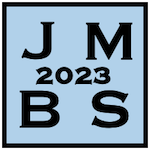The factors contributing to the evolutionary stabilization of multicellular life forms in the
history of life are still debated within the scientific community, and require experimental as
well as theoretical investigation. To this end, Bertrand Daignan-Fornier and his team of bi-
ologists (IBGC) are designing evolutionary competition experiments between unicellular and
multicellular forms of the yeast Saccharomyces cerevisiae. More particularly, the nutrient
environment is considered here as an important factor potentially driving such competition.
However, the connection between the population dynamics of these strains over time and
the shared nutrient environment needs clarification, especially for multicellular strains, who
display a complex physical structure.
Our goal is thus to develop mathematical models of the yeast population dynamics. This
approach will, on one hand, shed light how an entity grows in response to its environment,
and on the other hand, enable the numerical reproduction of the evolutionary competition
experiments conducted at the IBGC.
In this poster, I will present a mathematical model describing the evolution of a population
of multicellular yeasts, along with experimental data obtained in our collaboration with
IBGC biologists. A particular attention will be given to the numerical resolution of the
model, which should retain several integral quantities measured experimentally.
|
|
|
|
Population dynamics modelling of a multicellular strain of Saccharomyces Cerevisiae
1 : Institut de biochimie et génétique cellulaires
Université Bordeaux Segalen - Bordeaux 2, Centre National de la Recherche Scientifique
2 : Inria, Bordeaux University
L'Institut National de Recherche en Informatique et e n Automatique (INRIA)
|

 PDF version
PDF version
